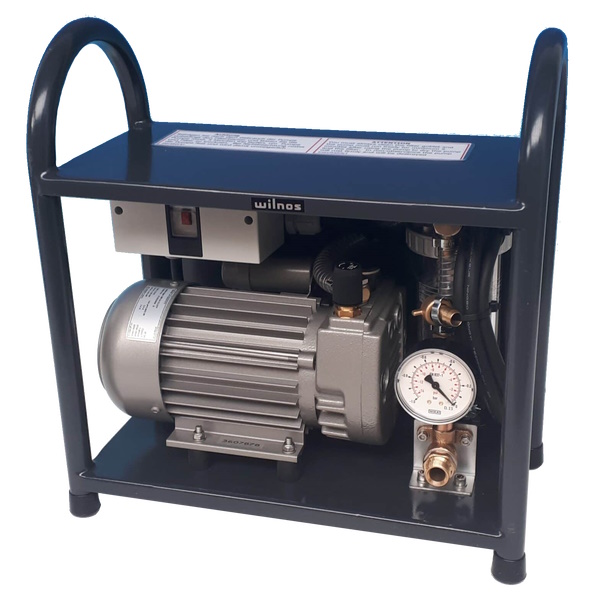Description
Leak detection with VSP-leak detection units and vacuum boxes
Using the bubble test procedure according to DIN EN 1593, vacuum leak detection units of the VSP series allow a fast and safe leak testing of the welding seams of containers, pipes and many other welded structures. With this testing method even castings can be checked for continuous discontinuities (leaks, porosity).
The leak detection method with VSP-units is used e.g. prior to a compression trial. They are also used instead of a compression trial, if the latter can be executed only with unrealistically high effort or if the compression trial gives only limited satisfying results (e.g. when testing parts which are thin walled compared to its measurements).
VSP leak detection units and vacuum boxes are used for leak testing especially in cases when the test piece is accessible only from one side or if it is an open construction (such as the bottom of tanks or collecting basins).
When using VSP-units, the area to be tested (the welding seam or the casting surface) is moistened with a foam-forming inspection material, e.g. MR® 99 Leak detection spray. Soap water should not be used for leak detection.
Then the area is covered with a vacuum box adapted to the test area. The vacuum box is connected to the leak detection unit by a vacuum hose and is evacuated very quickly.
Under the inspection glass of the evacuated vacuum box foam shows up where air flows through continuous discontinuities. This method allows easy location of possible leakages to be corrected or repaired.
Under practical test conditions, the realizable leak detection limit of the bubble test procedure is approx. between 10e5 and 10e4 Paxm3/s (10e4 to 10m3 mbar x l/s).
To ensure that even tiny leaks become visible the vacuum under the box must be maintained for at least 30 s.

